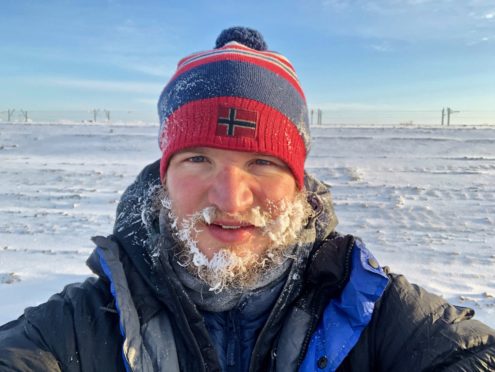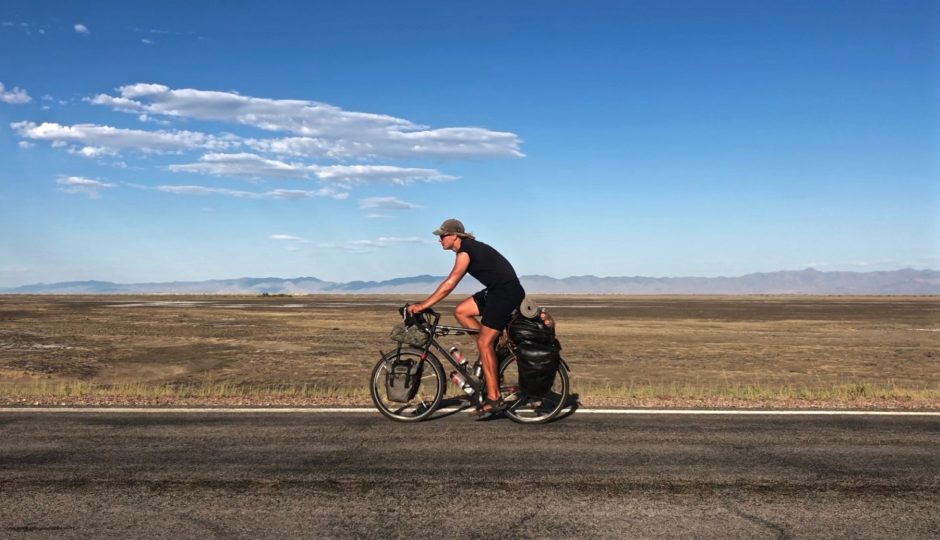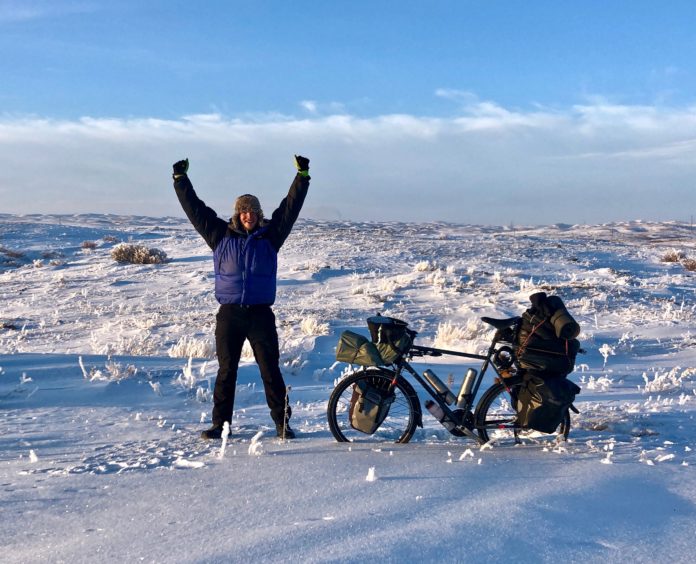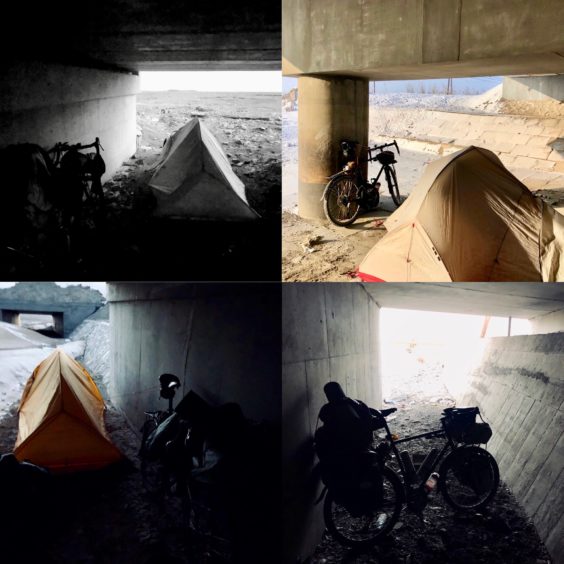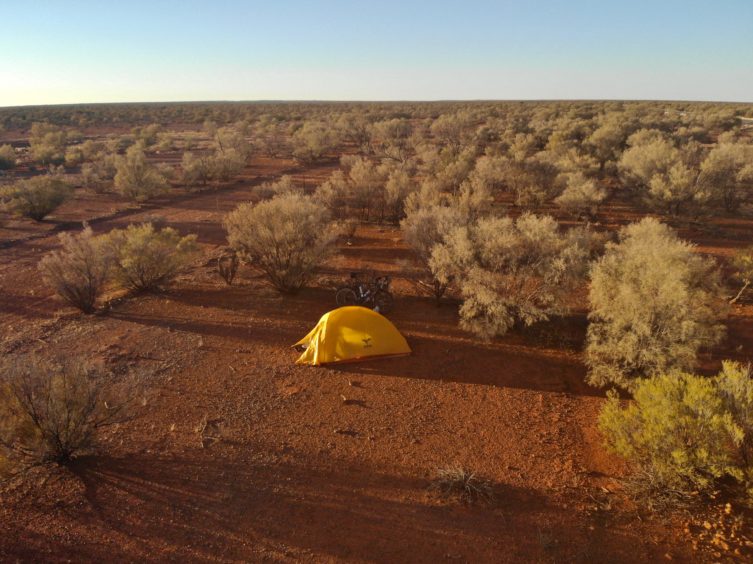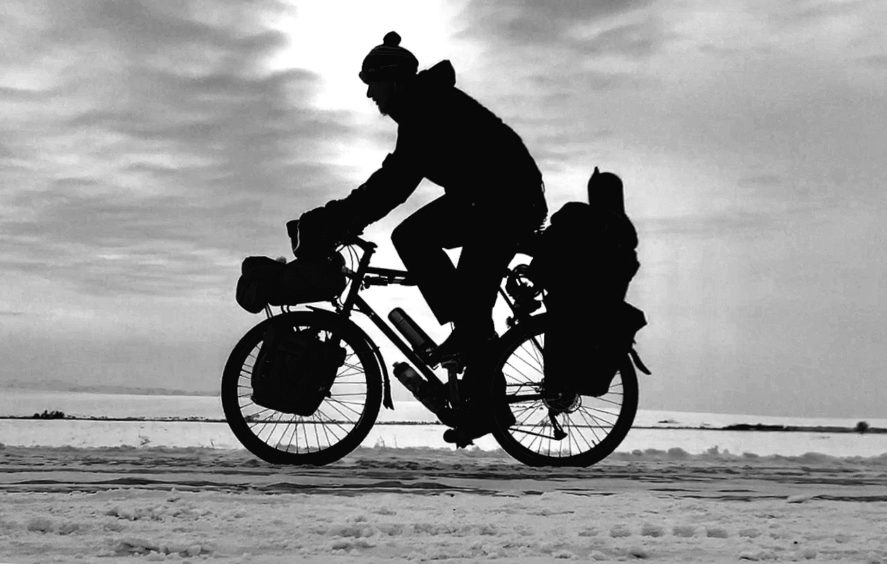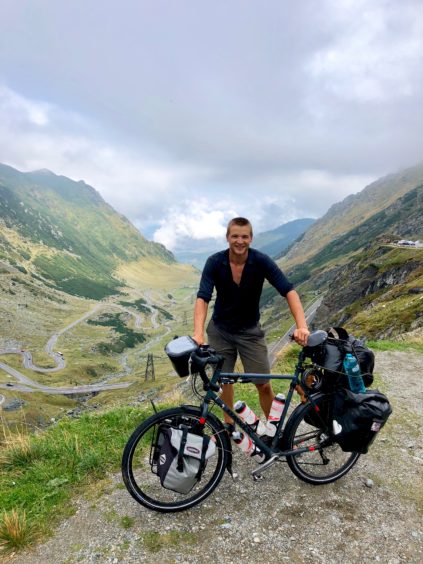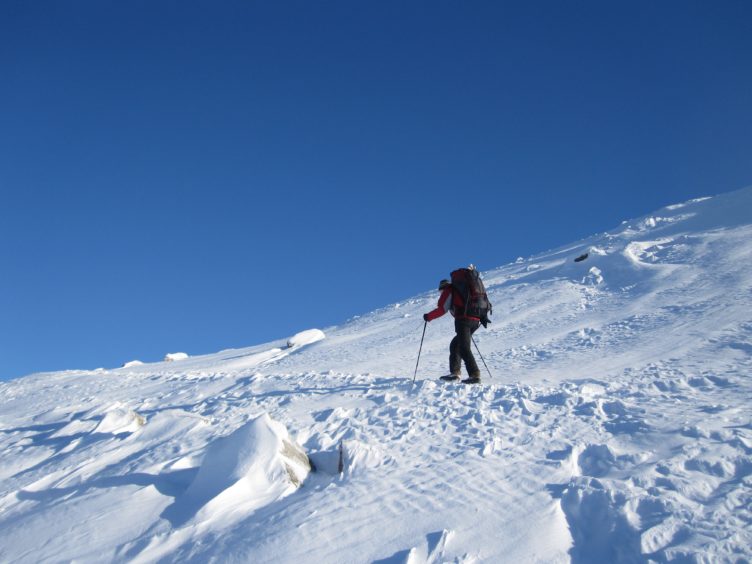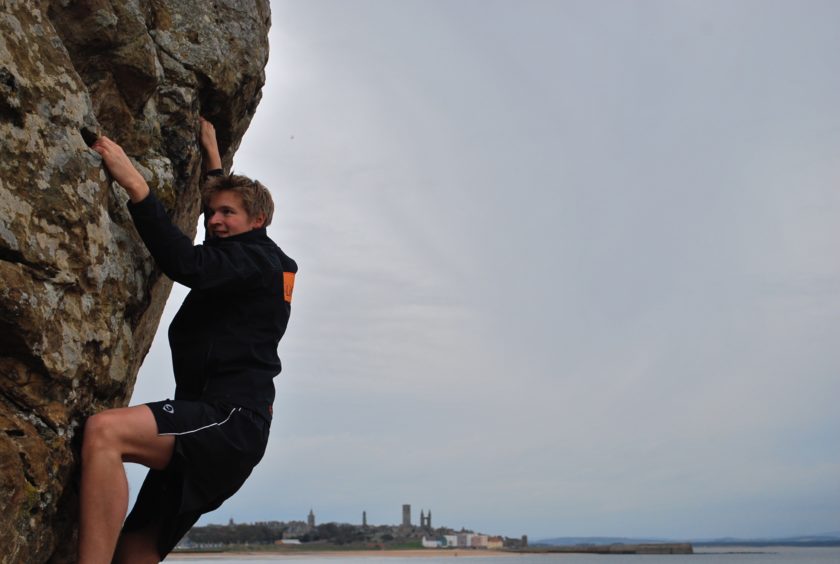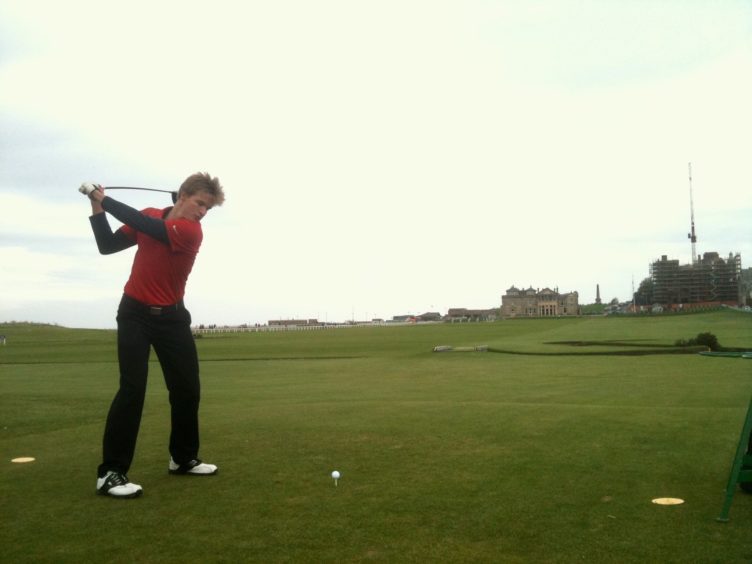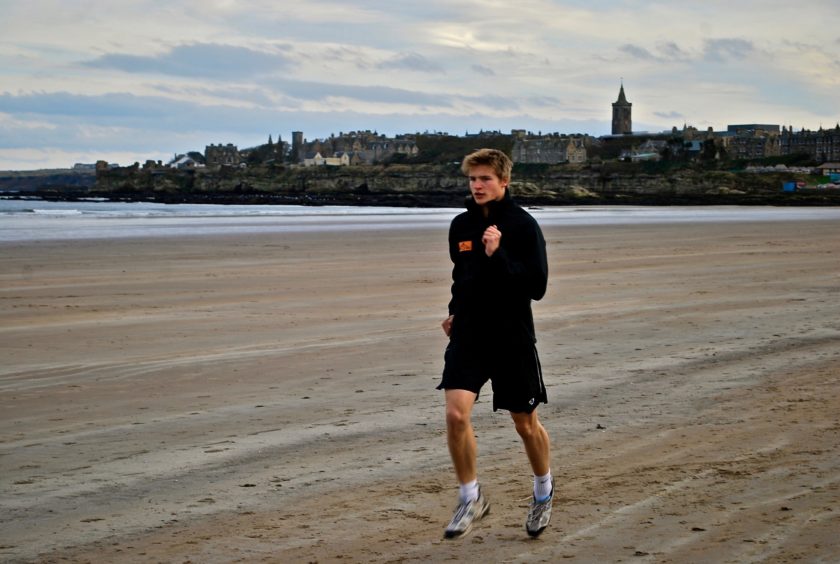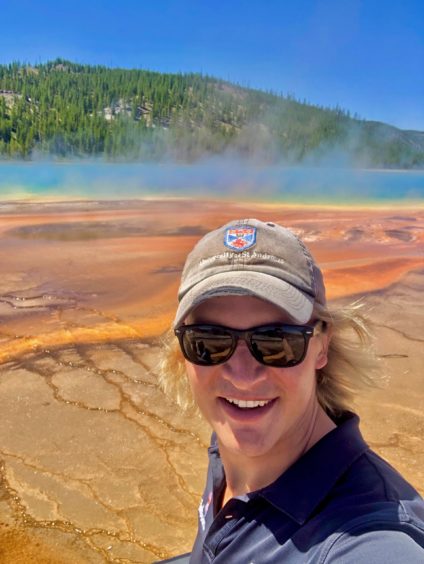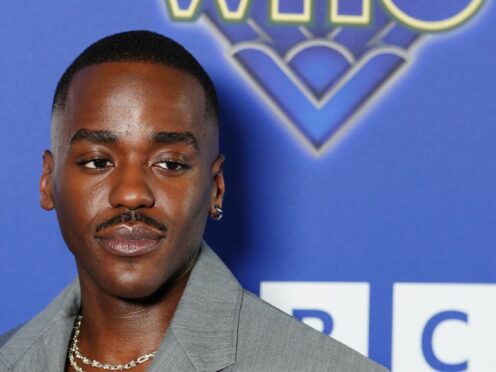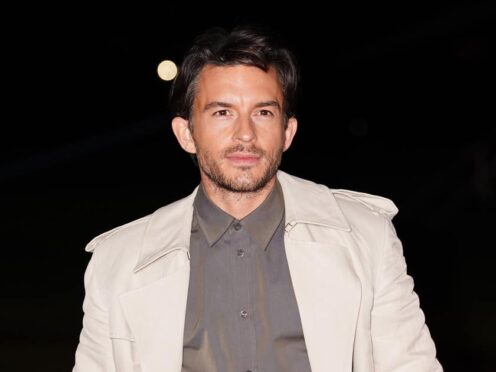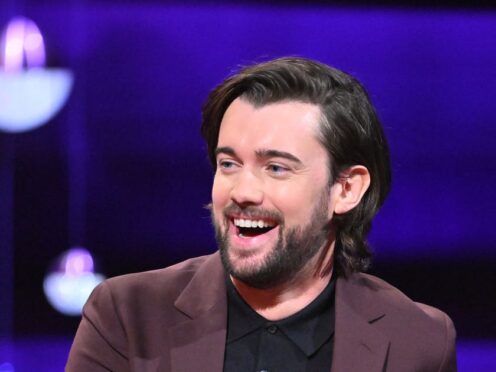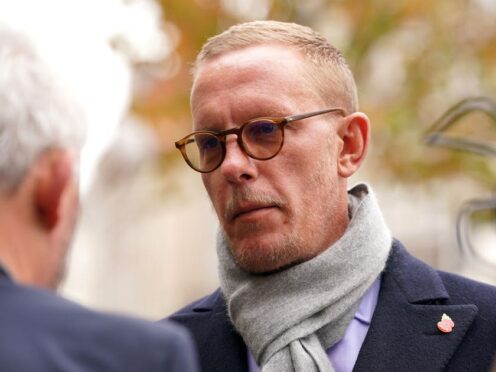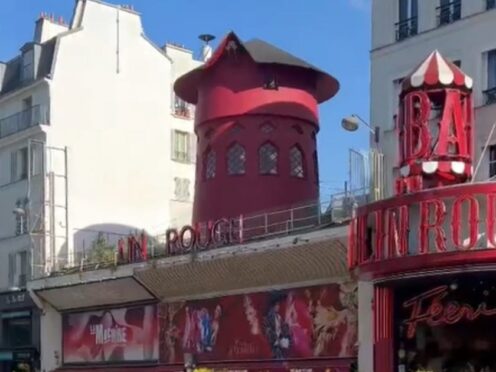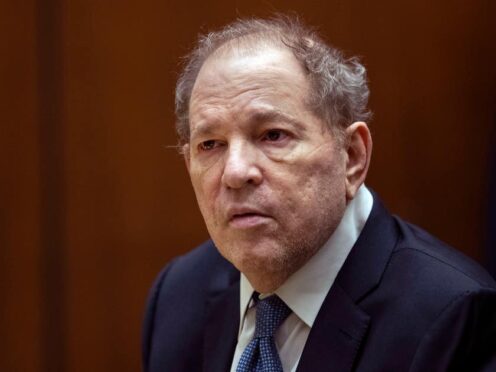As the only person to have both climbed the highest mountain on every continent and cycled solo around the world, Geordie Stewart credits growing up in Scotland with preparing him for the challenge. Gayle Ritchie finds out more…
A freezing, damp, drainage tunnel for a bedroom. Doesn’t sound like fun, does it?
But that’s exactly where Geordie Stewart found himself sleeping, or at least trying to, when he ventured into the volatile Chinese border region of Xinjiang during his epic solo cycle round the world.
“I had several nights sleeping under motorway bridges there,” recalls the 30-year-old.
“Politically, Xinjiang is a highly contentious and controversial part of the world.
“The motorways had barbed wire on either side to stop me leaving the road and being unaccounted for, so the only option for sleeping was in the drainage tunnels underneath.”
Thankfully, Geordie, a former St Andrews University student and ex-army officer who spent his childhood exploring Scotland’s harsh wilderness, is made of sterner stuff.
Aged 22, he conquered the world’s Seven Summits – scaling the highest peaks on each continent, including Mount Everest – becoming the youngest Briton to do so.
After graduating with a degree in history and theology in 2013, Geordie, who grew up idolising adventurer Bear Grylls, spent five years as an officer in the Army.
The day he left, in August 2018 – having saved up every penny he could lay hands on – he set off on his solo world cycle.
This was a gruelling journey that took 430 days, saw him cross 24 countries and four continents and pedal 22,500 miles.
Living on less than £10 a day, Geordie spent more than 200 nights wild camping and endured temperatures ranging from a teeth-chattering -40C cycling through Siberia to 44C in the USA.
Wild animals were a genuine concern in places, particularly Kazakhstan, so Geordie armed himself with a wolf animal – a bike light with a high pitched noise to warn off the creatures – and a knife.
“Despite the story a courageous fist fight would have brought me, I never had the displeasure of using my wolf alarm or knife in anger,” he says.
“The alarm did, however, offer an effective deterrent for barking dogs.”
Highlights of the trip included travelling through the lonesome and beautiful steppes of Kazakhstan, “hilarious and random” nights out with cowboys in the USA and ranch workers in the Australian Outback, and hooking up with an old pal in Laos.
His Xinjiang experience turned out to be the worst part of his journey. Not only was he forced to suffer nights in depressing “accommodation”, if you can call a drainage tunnel accommodation, but he found the country massively restricted his freedom.
“I struggled to accept what was happening around me politically,” muses Geordie.
“Getting stopped up to 10 ten times a day for passport checks, as well as having my phone and passport confiscated, having fingerprint scans and police interviews rather drained my morale.
“I found what was happening in Xinjiang politically and socially appalling because more than a million people are being imprisoned for their religious beliefs.”
Having completed the challenge and returned to the UK in October, Geordie has been working on writing a book about his exploits, due for publication later this year.
SEVEN SUMMITS
Ever since he was a teenager, Geordie had dreamed of climbing the highest mountain in each of the world’s seven continents.
Aged 18, he became one of the youngest Britons ever to summit Aconcagua, the highest mountain in South America. He then attempted a solo climb of Mount Kilimanjaro in May 2008 and reached the summit on his 19th birthday.
Hi attempted to climb Everest in 2010 but was forced to turn back 150m from the summit, having been heavily delayed on the ascent after helping a Sherpa and two teammates who were suffering from severe altitude sickness.
His failed attempted was just days after and fellow traveller and Scot Peter Kinloch had perished on its forbidding slopes.
The 28-year-old IT specialist had fallen ill and died shortly after reaching the top.
“I got to know Peter at base camp and so hearing of his death, in circumstances that could have been very similar to my own, was horrible.
“While he decided to push on to the summit, I turned back. That was a difficult decision for me, but it probably saved my life.”
Geordie reasons that the tragedy was an example of the “fine margins” in high altitude climbing.
“Each climber, every time they go to the mountains, has to weigh up what’s ahead and rationalise their own decision in their own way.
“Death and big climbing expeditions have been intertwined forever, It’s part of human nature to pit ourselves against nature and try to survive. Nature, however, is cruel and unforgiving.”
Geordie took a year out of university and set off on his Seven Summits challenge the following year.
This time, he made it to the top of Everest, but he was faced with the distressing ordeal of having to pass his friend’s body – and other bodies.
He had been warned Peter would be lying there, but when he found him, he was shocked.
“When you see a body you don’t know then you can slightly remove the human emotion to it.
“But when you see someone you do know, as I did, it’s harder to deal with. I even knew Peter supported Inverness Caley Thistle.”
After conquering Everest in May 2011, Geordie returned home to graduate from St Andrews University and then served as an Army officer for five years with the Light Dragoons.
While he filmed a documentary, The Ultimate Climb, for Discovery Channel which aired in 2012, a book he had written about his incredible exploits – In Search of Sisu – was published in 2018.
Both the expedition and his book have been endorsed by two of his heroes – Sir Ranulph Fiennes and Bear Grylls.
Sir Ranulph described it as: “Powerfully written and compelling…a must-read for anyone with an interest in adventure”, while Bear said the book “touches on key elements of human psychology, overcoming adversity and difficult decision making on an intensely personal journey.”
What does Sisu mean, I ask? Geordie laughs. “It’s one of those wonderful Scandinavian words that cannot be directly translated into the English language,” explains. “It is deeply ingrained into Finnish culture and national psyche from a young age. It roughly translates as grit, determination, courage and resilience.”
While the trip opened Geordie’s eyes to the immense generosity and kindness of strangers, it also helped him cope with an eating disorder.
“It helped put my bulimia into perspective,” he reflects.
“When in an extreme environment, your own survival and that of your teammates has to come first.
“I don’t have bulimia anymore but, in the same way an alcoholic would never call themselves fully recovered, you can’t be complacent.”
TOUGH SCOT
Born in London in 1989, Geordie spent much of his childhood and indeed studenthood in Scotland, where his father had grown up.
He fell in love with the Highlands, where he scaled the highest peaks and explored the vast wilderness, as well as in Banffshire, Fife and Edinburgh.
Indeed, Geordie credits Scotland and its rugged landscape for teaching him his craft and toughening him up for his expeditions.
“Dad grew up in Banffshire and lives in Edinburgh now, so Scotland is ingrained in our family,” he says.
“I’ve spent a lot of time exploring and hillwalking in the Highlands and I suppose, in many ways, my love of the outdoors was inspired by early adventures in wet and wild Scottish weather.
“I was certainly a very active child. I spent a great many hours climbing up huge trees, perching as close to the top as possible, watching the people and the world go by and then working out how I was going to get down.”
While studying in St Andrews, he regularly went climbing in the Highlands, especially around Ben Nevis, as well as in the Trossachs or Cairngorms as training for his Seven Summits challenge.
“The unpredictable weather and terrain provided ideal mental and physical preparation for future challenges,” he says.
He also spent an “enormous” amount of time exploring St Andrews and Fife by foot, car and bike.
“I even trained for my Alaska expedition – a self-sufficient sledge pulling expedition with a small team – by buying a small wooden sledge and dragging friends up and down West Sands!” he reveals.
“It was a unique sight for locals but it helped get the job done.
“I also attribute much of my Everest training to hacking ungracefully around the golf courses on St Andrews links. People laughed at the time.”
Currently living in London but making regular trips to Scotland, Geordie is now working on a second book.
Does he have any other expeditions planned for the future, I ask?
“That’s yet to be confirmed!” he says. “Right now, I am happily catching up with friends and family. And for me, the best way to reflect on what really mattered on my trip is to write a book about it.
“I gained a lot in terms of resilience, resourcefulness and adaptability. My understanding of the world in terms of other cultures and religions was vastly improved but also my empathy with how other people live.
“It’s easy to portray a trip in terms of beautiful photos and places visited but it’s the people that change your perspective.
“It is conversations with locals from different backgrounds and religions that open your eyes about the world and force you to think about your own country.
“I was constantly amazed and humbled by the lengths people went to all over the world to help me. I was hugely inspired by the generosity of strangers and will forever be grateful for their kindness.”
info
Geordie’s book, In Search of Sisu, is available on Amazon. www.geordiestewart.co.uk
